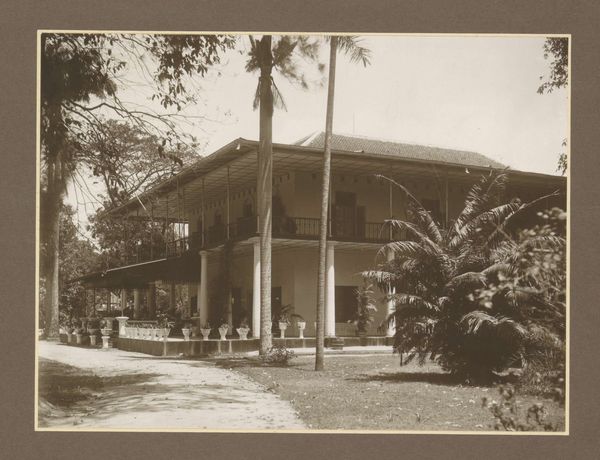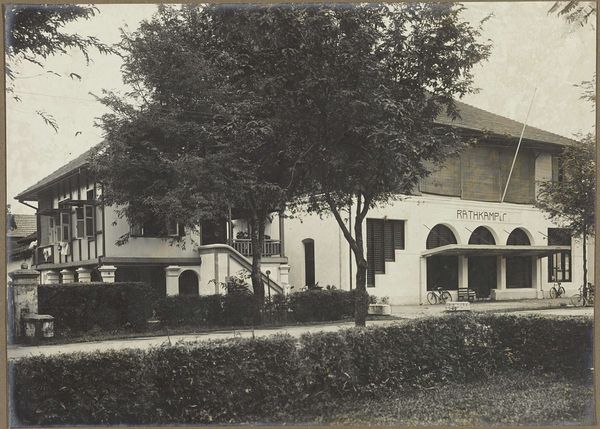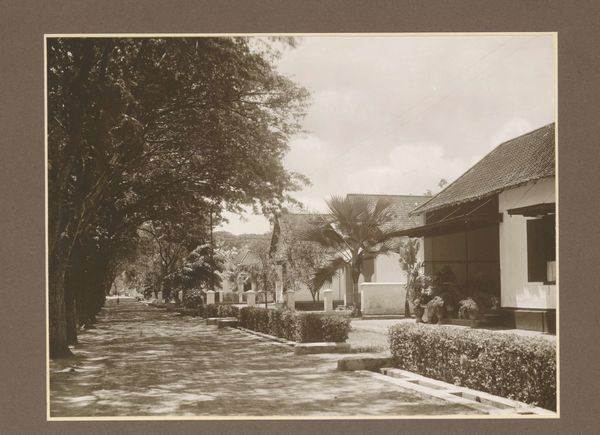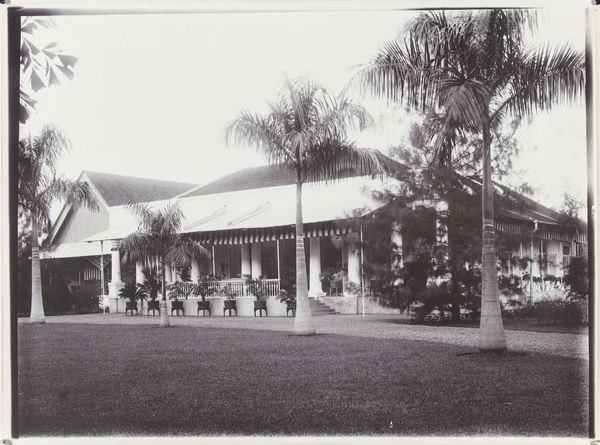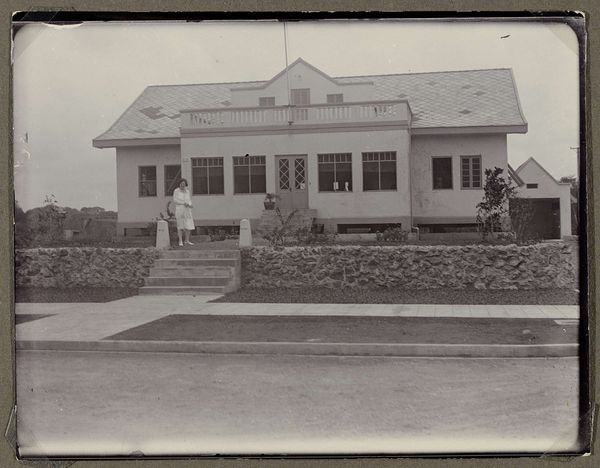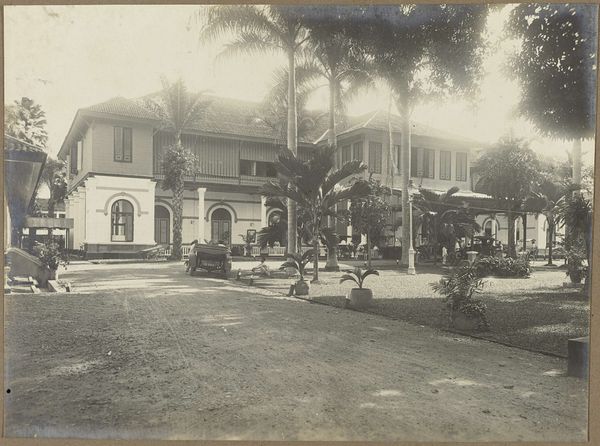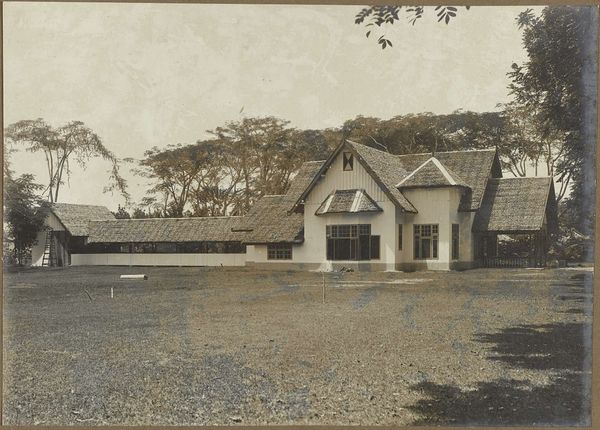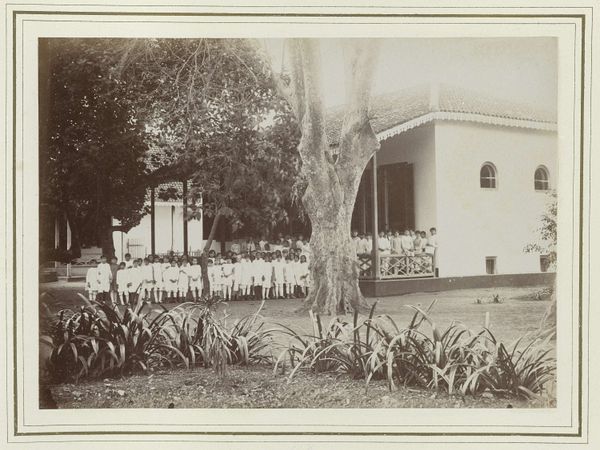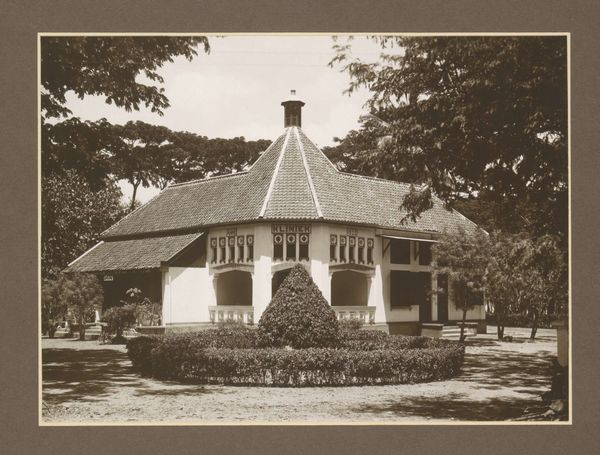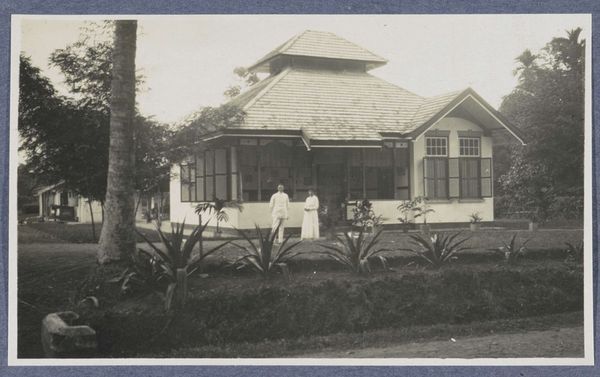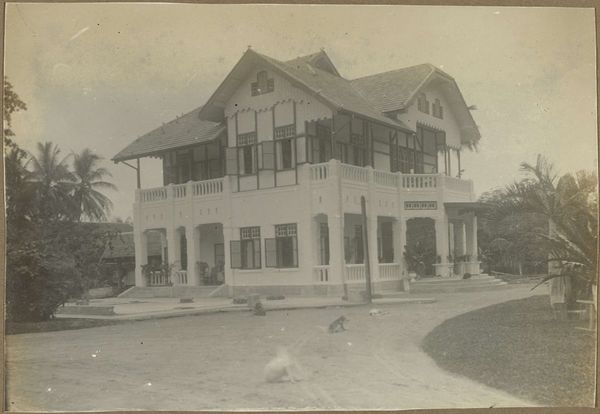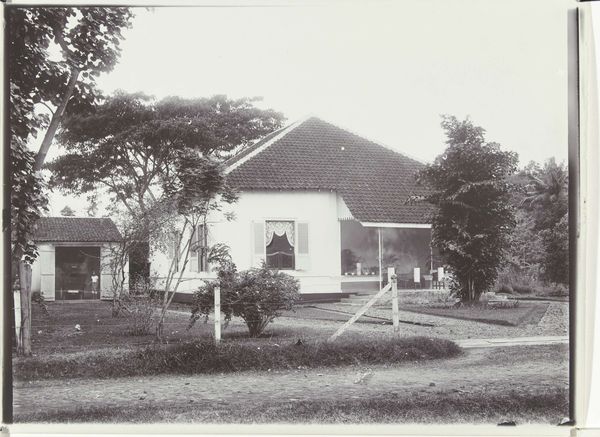
Groot huis op de suikeronderneming Nieuw Tersana, Cheribon, voormalig Nederlands-Indië c. 1890 - 1911
0:00
0:00
photography
#
black and white photography
#
countryside
#
landscape
#
photography
#
monochrome photography
#
monochrome
Dimensions: height 170 mm, width 226 mm
Copyright: Rijks Museum: Open Domain
Curator: Welcome. Today, we’re looking at a photograph titled "Groot huis op de suikeronderneming Nieuw Tersana, Cheribon, voormalig Nederlands-Indië," or "Large House on the Nieuw Tersana Sugar Plantation, Cheribon, former Dutch East Indies." The photograph was captured by Onnes Kurkdjian sometime between 1890 and 1911. Editor: Immediately, I get this feeling of subdued grandeur. There's a house, undeniably elegant with its rounded features, but something about the monochromatic tones and slightly overgrown garden feels melancholy. Curator: The image encapsulates a particular moment in the colonial history of the Dutch East Indies. Plantations like Nieuw Tersana were central to the colonial economy, exporting commodities to Europe. The large house visible in the image was typically the residence of the plantation owner or manager. Editor: Knowing that adds another layer, doesn't it? The beauty is now tinged with this undeniable… awareness. It's almost haunted, not by ghosts, but by a history of labor and extraction. The tree, framing the house, it's like it is bearing witness. Curator: Indeed. These structures were both homes and centers of economic control. The photograph itself participates in this dynamic, potentially serving as a symbol of Dutch prosperity, or, alternatively, a tool to document and maintain administrative power. Editor: I’m fixated on that house. The architectural details - almost European - amidst an unfamiliar landscape… it's such a stark contrast. It's this imposition of one culture onto another, etched in monochrome. You can almost feel the weight of it, the effort, and the sheer audacity of transplanting a lifestyle. Curator: The choice to capture this landscape through photography adds further complexity. Photography, in the late 19th and early 20th centuries, was seen as an objective medium, ideal for documentation. But of course, photographs never tell the whole story, always reflecting the biases of the photographer. Editor: It makes me wonder about the unseen narratives. The laborers who worked the land, the indigenous communities affected by the sugar trade, they exist just outside the frame, impacting my impression nonetheless. It serves as a potent reminder of how landscapes hold so much unspoken history. Curator: Ultimately, this photograph invites us to consider the multiple layers of meaning embedded within seemingly simple representations of landscapes and architecture. It reveals the inherent complexities of colonial history, and the enduring legacy that remains even today. Editor: It's like looking at a stage set, isn’t it? Beautiful, yes, but the play that happened here…well, that's something we’re only starting to truly understand. A picture might be worth a thousand words, but the silence in this one speaks volumes.
Comments
No comments
Be the first to comment and join the conversation on the ultimate creative platform.
